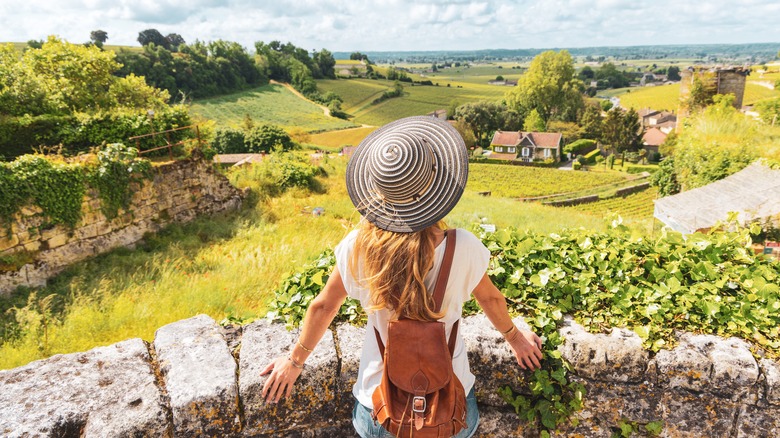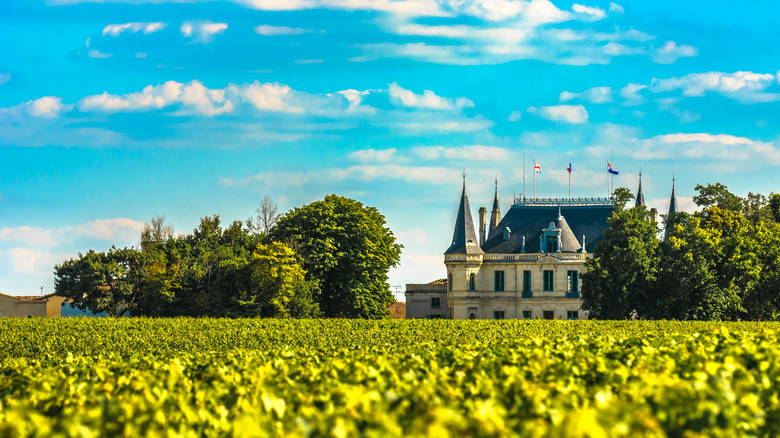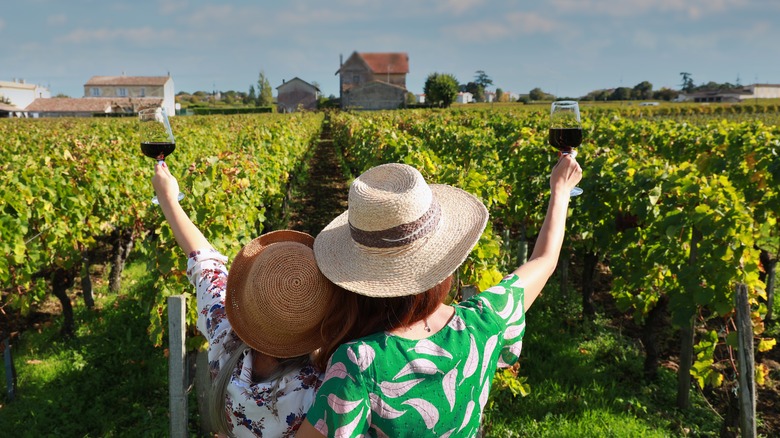This Beautiful French Destination Is A Great Spot For A Wine Vacation
With its picturesque landscapes and rich culture, France is — without a doubt — a traveler's paradise. After all, the country caters to pretty much every kind of traveler: from art enthusiasts looking to get lost in cities like Nice and Paris, to sun-seekers hoping to relax along the French Riviera, to wine lovers who flock to the country's famous wine region on the hunt for great sips.
France's iconic wine region spreads across the country from Champagne in the north to Languedoc in the south. While northern vineyards are famed for its white wines and southern regions celebrate the robustness of its reds, there's a region that stands out among the rest: Bordeaux. With a global reputation built on producing high-quality wines — a result of the region's optimal climate and soil conditions, as well as its centuries of winemaking expertise — it's no wonder that Bordeaux has become synonymous with wine excellence.
Once you've sipped your way through some of the world's best vintages, Bordeaux has plenty more to offer. Whether you like grand castles steeped in history or quaint market squares bustling with local life, travelers can go beyond the wine glass to explore the region's rich culture and traditions.
Bordeaux's wine-making magic
Nestled in the southwest of France, Bordeaux's reputation as a wine-producing powerhouse precedes it. The region's location near the Atlantic coast means that the country typically enjoys a maritime climate that's ideal for grape-growing and seasonal harvesting. Specifically, the Médoc subregion (with 39,500 acres of vineyards) is known for its gravel-rich soil and for producing some of the most premium wines in the world. It is a beacon (and a must-visit) for wine connoisseurs.
Stretching north from the city of Bordeaux, Médoc has become synonymous with prestige. It's also where Bordeaux's most famous Grand Cru Classé wine estates — which translates directly to "Great Classified Growth" and highlights a vineyard's excellence in producing high-quality wines — are found. This, combined with the region's picturesque chateaus and the scenic Route des Châteaux attract both wine and travel enthusiasts from around the globe.
Diving into the details, Bordeaux's wines are distinctive largely because they are blends — with cabernet sauvignon, merlot, and cabernet franc as the three most common grape varieties that make up a traditional Bordeaux red blend. To make things even more specific, Bordeaux blends are also categorized into two groups: "right bank" and "left bank." Why banks? Put simply, the region is cut through by the Gironde estuary — a natural division that separates the area. So while "right bank" blends come from the right side of the estuary and are usually made up of mostly Merlot, "left bank" blends focus primarily on the cabernet sauvignon grape.
Planning your visit to Bordeaux
A dream destination for wine lovers, Bordeaux isn't just about rich flavors — it's about helping travelers live out the process, too. With different wine tours starting from just $25, these guided visits are the perfect opportunity to see — and taste — the history of Bordeaux's wine-making tradition.
However, when it comes to choosing exactly where to go and which wines to taste on your wine vacation, some of the top names in the region include Château Margaux, often referred to as the "Versailles of Médoc"; Château Lafite Rothschild, which dates back to the 14th century; Château Latour, renowned for its consistent wine quality across vintages; and Château Angelus, one of the most prestigious wineries in the Saint-Émilion district.
As for actually getting to Bordeaux, the city's Bordeaux-Mérignac Airport welcomes flights from different parts of the world, including the United States and other major European cities. However, if you're already in Europe, taking the train into Bordeaux's Saint-Jean train station will make for a much more scenic and affordable option — and best of all, the ride should only take about two hours from Paris.


